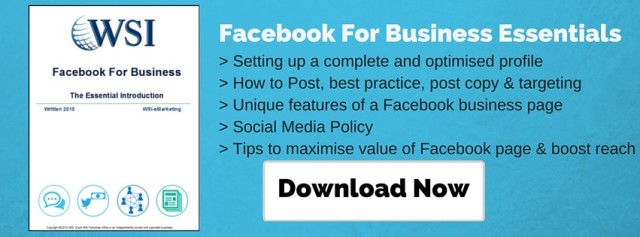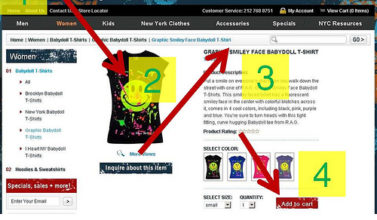
If you’re doing any form of Content Marketing then you need a Content Marketing Strategy. Even if you already have one there’s no reason it can’t improve. In 2015 just having content isn’t enough. In fact just spending time creating content with little clear aim or value can harm your business.
You want to create content that engages your audience and adds value to your business. To do that you need a clearly defined strategy that takes into account your needs, wants and abilities. This will make your content easier, quicker and cheaper to create. Once you have a strategy you can create a content plan and from there you can delegate. Suddenly a very daunting multi-facted campaign is a simple set of tasks.
1. Know Your Objectives
It’s important to have clear goals and measures for your Content Marketing. Avoid simply producing content because you think you should. All content should have a purpose. A few examples:
- Lead Generation
- Drive referrals to your website
- Brand Awareness
- Information Capture
Once you’ve decided what exactly it is you’re trying to achieve break that main aim down into manageable goals. Try to avoid measures such as Traffic or Likes. These are an indicator of how successful a single piece of content is but not a measure of how successful a campaign is. With the exception perhaps of Brand Awareness. Here is the point where you should try to think of any challenges you may face and how to overcome them. Consider your unique proposition and how it fits with your business goal.
2. Know Your Personas
This links back to knowing why you are creating each piece of content. Your aim with Content Marketing is to enthuse and educate the customer. That means your content must all be geared around your customers. Well fleshed out Buyer Personas help you to target your content. Use your market research to find out what content works best with each Persona.
To best write for your customers you’ve got to think about them. What motivates them? What problems do they face everyday? How can you help them? How do they speak and search? Where do they consume most of their Media? (Social Media, Blogs, Industry Websites etc)
Here’s a great, highly detailed article on how to craft in-depth Buyer Personas from HubSpot.
3. What Do You Have and What Can You Do?
When it comes to creating your Content Marketing Strategy you should consider what resources you already have. Don’t base your strategy around them, but keep in mind what you can already use. Be brutal with it, ask if it’s fit for purpose, especially with your new strategy. If not, bin it.
Now it’s important to consider your own abilities. If you need to outsource all of your video and copy work then keep that in mind when you come to scheduling your content. You’ll want a wide mix of content so knowing your limitations is important. Second rate content should never be published.
When it comes to creating content you don’t always have to be too strict with the process. If you have a subject and an aim then running with it in a free form way can sometimes return great results. Just remember to be reflective and critical. Ensure you’re always targeting your Personas and not making content that is simply appealing to you or your team.
4. Plugins, Tools & CMS
Trying to run a Content Marketing campaign without a lot of help from technology is a huge task. It’s also one no-one should be trying to take on 2015! There are a lot of Content Managment Systems out there to choose from depending on your needs. These are your one stop shop to doing everything related to your content Marketing. If you’d rather avoid one singular CMS then there are also a myriad of Tools and Plugins to help with your Content Marketing.
Educate yourself on what is out there and how it can be used. It will make everyone’s life a lot easier when it comes to the implementation of your Content Marketing Strategy.
5. Content Schedule
A solid schedule is important to maintain consistency. Consistency is key when it comes to Content Marketing. Having a schedule well prepared makes life easier for everyone. You know when everything should be ready. Your copywriters, editors and everyone else knows well in advance what needs to be done. It’s a given that ad-hoc work will need to be thrown in but having as much planned as possible keeps life simple.
Know any key dates in your content calender. Remember seasonal and holiday related content at the correct times.
It can be difficult to delegate responsibility if you’re not used to using copywriters or other outsourced content creation services. Create your schedule first, then see if you can keep to it without compromising your other areas of work. If not then you need to think about outsourcing or delegating. Your time is valuable, don’t spend it writing copy if it’s not cost effective.
6. Articulate Your Content Marketing Strategy Clearly
You’re going to have to work with people when it comes to your Content Marketing. Being able to clearly articulate your Strategy to your staff and collaborators is key. Creating the vision is only half of the battle. Share your strategy with your team and across the company. Having the knowledge of how their particular copy fits into the grander Strategy can help inform the copywriters.
Related Post
What’s the single...
Adam Vincenzini from Comms Corner recently posted a very good article which I think goes...
- January 25, 2011
- By Rob Thomas
- Blogging
Top Tips for Product Page...
As the internet evolves and user expectation becomes increasingly sophisticated, creating...
- May 31, 2011
- By Rob Thomas
- e-Commerce
Content Sharing Via Social...
Target marketing to meet your business goals Is your business using social media channels...
- June 15, 2011
- By Nadine Thomas
- Digital Marketing
Brilliant Business Blogging
Blogging has long evolved from just being an ideal platform for enthusiasts and budding...
- August 9, 2011
- By Rob Thomas
- Blogging
Getting the Most from your...
LinkedIn is not only the most popular social network for professionals but with more than...
- November 22, 2012
- By Nadine Thomas
- Linked In
Can you get help to fund your...
If you need a new website, it’s possible that you could get help towards the cost....
- May 30, 2013
- By Rob Thomas
- Digital Marketing












[…] have an effective content marketing plan you need to regularly post content on your blog and across multiple social media platforms. Unless […]
[…] Become an Adaptive Content Marketer As well as giving helpful information, your content is your way of showcasing your expertise, so […]